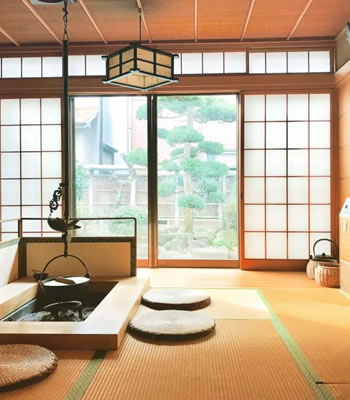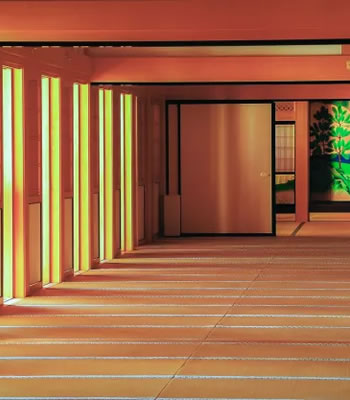TATAMI In 10 Minutes, I’ll Give You The GREAT Truth About everything!
A place to relax, sleep or enjoy a traditional Japanese tea Ceremony with your friends or just alone. A simple design piece of endless possibilities that comes from Asia. “Sense…
We're an affiliate
We hope you love the products we recommend! Just so you know, we may collect a share of sales or other compensation from the links on this page. Thank you if you use our links, we really appreciate it!

A place to relax, sleep or enjoy a traditional Japanese tea Ceremony with your friends or just alone. A simple design piece of endless possibilities that comes from Asia.
“Sense for detail“, by this sentence we can describe a traditional Japanese house. Japanese people use natural materials to construct many architectural designs in their houses. Tatami became a part of the Japanese houses, which are created from rice straw or igusa straw, that serve as mats, which provide soft cover for sleep or use for rooms.
Let’s go deeper inside the Tatami!
Have you ever thought about Japanese culture, how they sleep or where they spend free time in their house? Just imagine that they sit comfortably, walk, or sleep on the floor. Of course! We mean Tatami. Japan’s traditional flooring.
Tatami are made from compressed layers of rice straw or igusa straw 藺草.
Do you smell it? Yes, it is the fresh grass.
The core traditionally consists of the natural base, but these days it is a little bit different. Polystyrene foam or chipboard is often used inside the Japan mats.
With automatics comes the revolution. TATAMI floors are no longer hand-made, the machines took the place and push away the traditional hand-making. It is very rare to find original handmade tatami from IGUSA straw.
Tatami floors are common only in Japan. The West world uses frames, most commonly wood frames, but it is also not rare to find steel frames.
Creation of Tatami
Doko 畳床 forms the basis of the mats. The inside of the mat is made from compressed rice straw. This is the traditional filling, but it is later changed to chip or styrene form because it was hard to get the rice straw and also a problem with bugs. The base is around five centimeters thick.
Omote 畳表, In other words, is the cover of mats. Tatami Is made from igusa and its length and weave are precisely set. With the use of two mats weaved together in the center, we create a strong and thick mat. It has to be held together by four hemp strings two on each weave. These strings bind the igusa together.
Fuchi 畳縁 Border or edge of mats. Made from special covering fibers, such as cotton or hemp that protects these edges and it is attached along the longer side. After a time this way was changed for synthetic fiber because these fibers are stronger and cheaper. Nevertheless, natural fiber will still remain of better quality.
Two ways of placing tatami mats
Shyugi Shiki 祝儀敷き The most common placement method. It is the favorite way done in ordinary households. There are placed in a way that the 4 corners don’t gather in one spot.
Fushyugi Shiki 不祝儀敷きMats are placed horizontally or vertically. Fushyugi shiki is used for events such as funerals.
Interesting point of view
Traditional Japanese mat size variation depends on the region it comes from. In Japan, we can found the difference in measurement unit size for the length between the East and the West. Mat from the West of Japan known also as “Kyo-ma” is bigger in size compared to the East mat called “Kanto-ma“.
Apartment in the style of Japanese minimalism and practicality with Ryukyu mats. They are placed directly on the floor and they have a square shape and a smaller size. They found their popularity among young people, usually during house design.
Mats are usually rectangular shape 2:1 with the standard size around 910mm x 1820 mm. They are made to fit the room size and blend inside the room. That means the standard size is not the only option. The size of the house is commonly set in mats numbers.
Ecological thinking of Tatami mats
AIR PURIFIER. IT ABSORBS CARBON MONOXIDE & ACTS AS A TEMPERATURE REGULATOR, ABSORBING MOISTURE, AND IS HYPOALLERGENIC. A GREAT OPTION FOR BABIES AND SMALL CHILDREN BECAUSE OF FEATURES. THE MATS ALSO ACT AS INSULATION BOTH FOR TEMPERATURE AND SOUND
Great choice
Be prepared to take your shoes off!
Japan etiquette would like to tell you something important…Just read on!
“Take off your shoes before entering a Japanese house.”
You should know this statement before you visit our East world. Maybe it sounds strange for some people but in Japan, it’s a cultural habit.
Now, you know that you can step on the tatami floor only barefoot or in socks. It is made from rice straw, which means shoes are not a big friend of the tatami floor. The weight of your shoes can do a lot of damage to the floor. Walking barefoot on the mats will keep them clean and easy to vacuum.
The Japanese house is breathtaking due to the uniqueness of the culture.
Japanese people love simplicity, cleanliness, and practicality, they should be considered as “teachers of the house.“In the end, we have something special for you!
In the end, we have something special for you!
Japanese culture is full of interesting aspects and one of them is the way of walking on mats. Maybe, it will sound surprising, but not everyone knows this fact in Japan.
So let’s talk about it: At the entrance of the Japanese traditional house or Japanese temple has some rules and one of them is stepping on the edge of mats. You should walk only in the center of it.
So, I would like to give you a small tip: When visiting a traditional Japanese house, Japanese temple, or tea ceremony, you should not step on the edge of the tatami. This is just a small detail that can make you a better person in eyes of Japanese people and understand their culture a little more.
What are your personal experiences with tatami? Had you had any yet or did you already felt the smell of grass and felt it under your foot? Let us know in the comments below!



Be the First to Comment